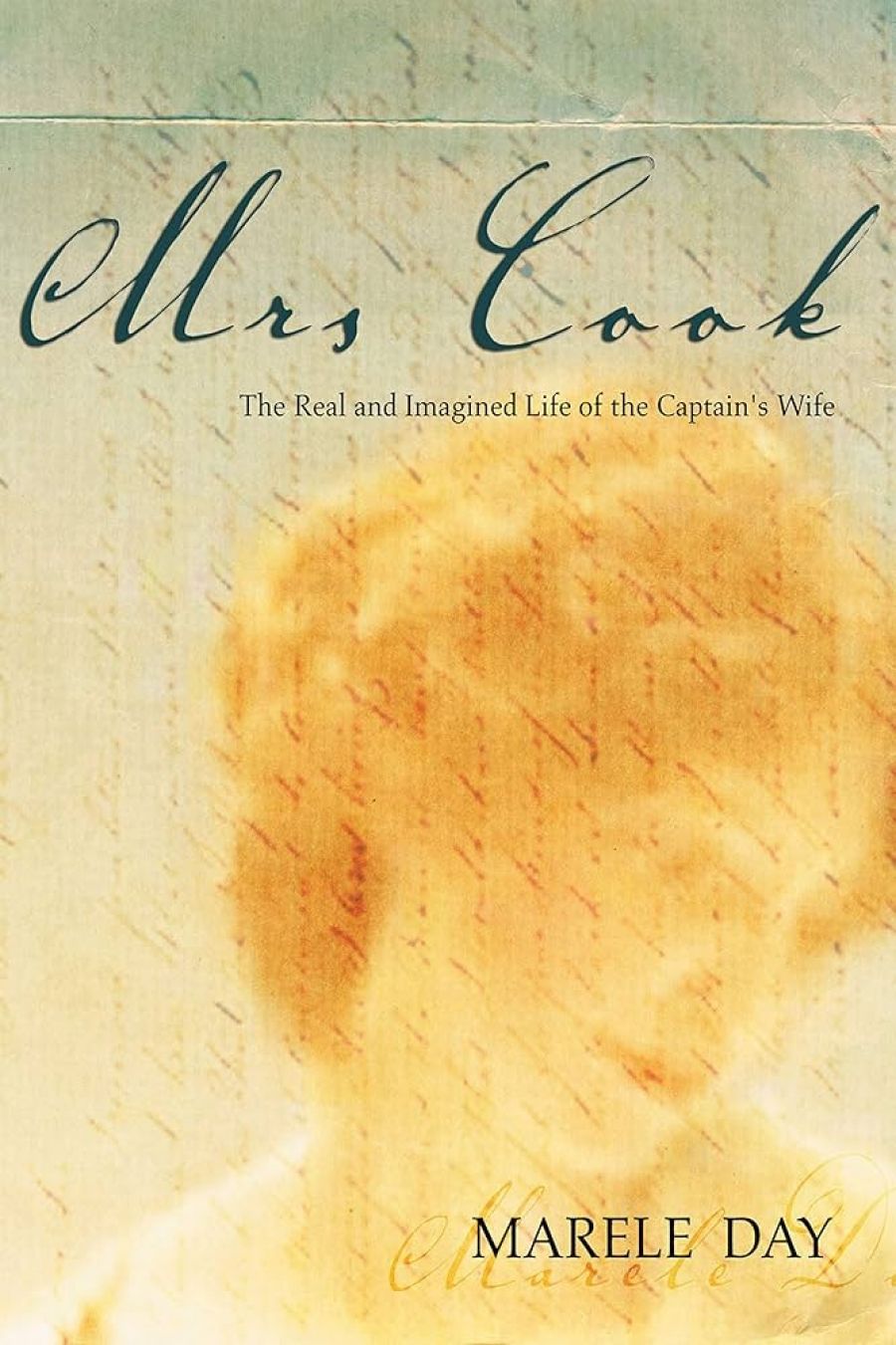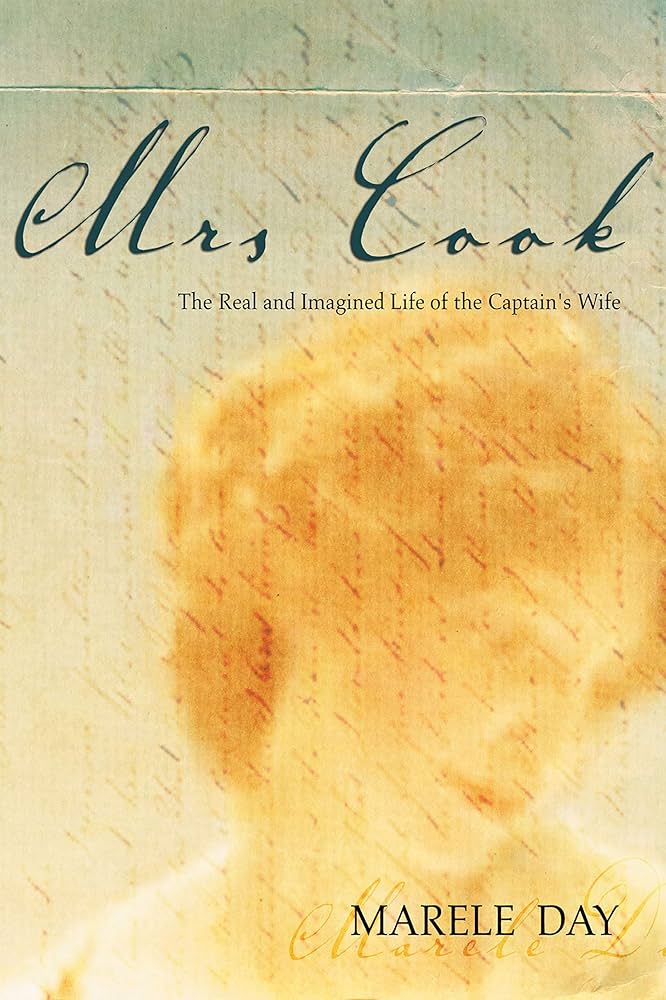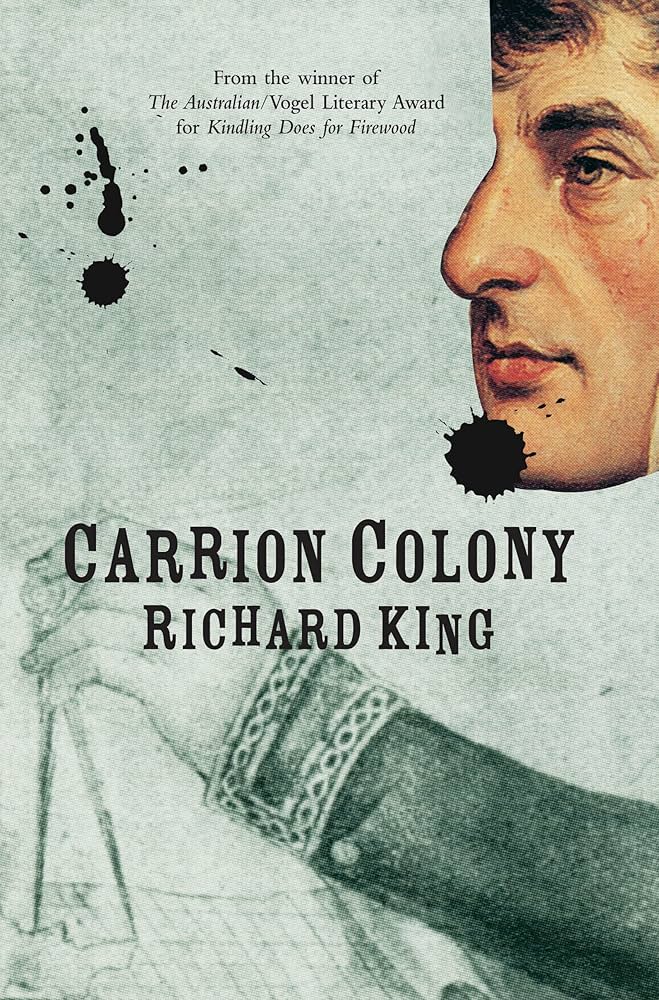
- Free Article: No
- Contents Category: Australian History
- Review Article: Yes
- Article Title: Colonial Romps
- Online Only: No
- Custom Highlight Text:
We readers ask a lot of our writers. We know what we like, but sometimes we prefer something new. We want to be taken along on the ride, but won’t tolerate being taken for a ride. We may want to learn something, but we don’t care to be lectured. We like a bit of fun, but can’t bear to be mocked. Yet we can also be quite generous. We don’t mind giving up control of our lives for the few hours it may take us to read a book, letting the writer take the tiller for a while. We are willing to believe in the events and characters the writer creates, to think and feel what the writer tells us to. And we go along with the greatest fiction of all: that the writer is omniscient and omnipresent. Not only do we collaborate in this great delusion, we encourage it.
- Book 1 Title: Mrs Cook
- Book 1 Subtitle: The real and imagined life of the captain's wife
- Book 1 Biblio: Allen & Unwin, $29.95 pb, 357pp
- Book 1 Cover Small (400 x 600):

- Book 1 Cover (800 x 1200):

- Book 2 Title: Carrion Colony
- Book 2 Biblio: Allen & Unwin, $19.95 pb, 261pp
- Book 2 Cover Small (400 x 600):

- Book 2 Cover (800 x 1200):

So if a writer tells us that his story begins ‘several hundred years ago next Tuesday’, we don’t take it literally; he’s having a bit of fun. If another writer calls her novel a ‘real and imagined life’, we get the picture; she wants to tell us a story based on historical events, and, if she’s made up some of the details, that’s fine with us.
Richard King’s latest novel takes place ‘several hundred years ago next Tuesday’ in a British penal colony in New South Wales. The name of the colony is Old and New Bridgeford. The cast of characters – they are all ‘characters’ – includes the Colony Astronomer, the Colony Ratcatcher, the Colony Cartographer (whose job is to draw maps of such devastating awfulness as to deter other nations from settling the continent), Governor Rantallion and a phytophobic doctor whose hatred of the native vegetation is matched only by his fondness for a native bird called the kurrapuuk. Then there is the seriously nasty Captain Naskin and the seriously gorgeous Spanish Girl, plus a full supporting cast of soldiers, lags and wenches.
Carrion Colony is a literary romp, an ahistorical shaggy-dog story. Its language is piquant and full of fun – a mixture of quasi-eighteenth-century genteel (‘She allowed that there was commendable merit in their endeavours and thanked them for their industry’) and starkly modern (‘Don’t you take a fucking hint, Pal?’). The plot soars and swoops with the language.
The story revolves around arrangements to pair up the men in the colony with the women. ‘Pair up’ is perhaps a euphemism for what is really sexual bondage, and it may be here that the claim on the book’s cover that it ‘interprets history with a wickedly satirical lens’ is justified. The role of convict women in early Australian society has been described so often by historians that we are now expected to take it as read that women in early colonial Australia invariably got the undesirable end of the stick. King seems to accept this as given, though his treatment of the subject is more satyric than satirical. Where the story eventually goes I will not reveal, but there are a few surprises along the way.
This is a book where the journey is more important than the destination. The author is clearly enjoying the ride. But sometimes I found myself annoyingly distracted. This usually happened when I felt the author was leaning over and trying to talk to me, to explain where we were or where he was taking me. King often does this with footnotes, some of which take up most of a page. Footnotes are always a distraction and should be used with enormous care, especially in works of fiction. The author’s voice – here sometimes appearing in the footnotes, sometimes in the main text – is also a tricky tool for any writer to use successfully. I don’t mind King’s telling me early in the narrative, ‘I am no more a trained practitioner of medicine that I am a scholar of Nineteenth Century Australia’: I am already in on that joke. But when, towards the end of the book, he meanders into a description of various other (non-existent) versions of the book I have been reading – the movie version, the operatic version, the Lloyd Webber musical version (‘boring piffle’), and the some-what expanded ‘campfire’ version – he becomes too self-indulgent. He lost me, and it was with difficulty that I caught up before the end.
Marele Day makes no claims to being a trained medical practitioner – she is, in fact, the author of several excellent novels featuring the Australian private eye Claudia Valentine – but now she makes some claim to being a scholar. The first page of her new novel Mrs Cook: The Real and Imagined Life of the Captain’s Wife liberally acknowledges so-and-so of such-and-such museum and the staff of this great library or that. Day has clearly done her historical homework. Now all she has to do is make sure it doesn’t show.
The backbone of her novel is the true story of Elizabeth Cook, wife of the English navigator and explorer James Cook. The book follows Elizabeth’s life from her upbringing in mid-eighteenth-century London and her marriage to a dashing and ambitious Royal Navy lieutenant fourteen years her senior, to her husband’s voyages and violent death, and onwards to her own death a long fifty-six years later. It’s a great story, a tragedy played out on a worldwide stage. Elizabeth lost her father as a child, her mother died an alcoholic, and no sooner had her husband worked his way up to fame and fortune than he was speared to death on a distant shore. She was thirty-seven when he died. All six of her children died before she did, some as infants, the eldest drowning in adulthood. Day has taken this story and filled in the gaps with her novelist’s pen, but she has not quite got the hang of using historical ink. It tends to run over the page, and I sometimes felt as though, instead of reading a novel, I was getting a history lesson. If a writer wants me to experience the sights, sounds and smells of a London ‘Frost Fair’ when the River Thames froze over in 1739, I don’t want to be told that, in 1565, Queen Elizabeth attended an earlier Frost Fair ‘to witness an ox roasting on a spit’. When I am briefly introduced to a Mr William Wales, astronomer on the Resolution for Cook’s second voyage south in 1772, I really don’t need to know that, at some time in the future, he would become a teacher to Samuel Taylor Coleridge. It may be true, but it is distracting.
Perhaps, if Mrs Cook had been written more as a biography than a novel, I would have accepted, even welcomed, the intrusive scholarship. But, then, I would have found it hard to take the imagined responses of Elizabeth Cook to her husband in the marriage bed, which Day describes in some detail. We readers ask a lot of our writers.


Comments powered by CComment